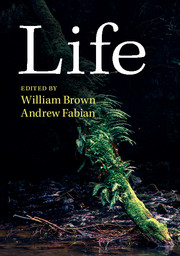Book contents
- Frontmatter
- Contents
- List of figures
- List of tables
- Notes on contributors
- Preface and acknowledgements
- 1 Life and death of a cell
- 2 The spark of life
- 3 From genomes to the diversity of life
- 4 Artificial life
- 5 Life in conflict: soldier, surgeon, photographer, fly*
- 6 Life in the ancient world*
- 7 Life in ruins*
- 8 The after-life*
- Index
- References
4 - Artificial life
Published online by Cambridge University Press: 05 September 2014
- Frontmatter
- Contents
- List of figures
- List of tables
- Notes on contributors
- Preface and acknowledgements
- 1 Life and death of a cell
- 2 The spark of life
- 3 From genomes to the diversity of life
- 4 Artificial life
- 5 Life in conflict: soldier, surgeon, photographer, fly*
- 6 Life in the ancient world*
- 7 Life in ruins*
- 8 The after-life*
- Index
- References
Summary
Living organisms are extraordinary. They have capabilities which far exceed any present-day technology, and it is therefore inevitable that scientists and engineers should seek to emulate at least some of those capabilities in artificial systems. Such an endeavour not only offers the possibility of practical applications, but it also sheds light on the nature of biological systems.
The notion of artificial life can take many diverse forms, and in this article we will focus on three aspects: modelling the development of structure in living systems, the quest to create artificial intelligence, and the emerging field of synthetic biology. All three topics reveal surprising, and sometimes remarkably deep, connections between the apparently disparate disciplines of biology and computer science. There is something else which links these three strands: the Cambridge mathematician Alan Turing (see Figure 4.1) whose birth centennial we celebrated in 2012.
It is widely acknowledged that Turing laid many of the foundations for the field of computer science, although amongst the general public he is perhaps best known for his role in breaking the Enigma and other cyphers at Bletchley Park during the Second World War (Hodges 1992). What is perhaps less widely appreciated is that Turing also made important contributions to biology. As we shall see, each of the three topics discussed in this paper builds on a different seminal contribution made by Turing.
- Type
- Chapter
- Information
- Life , pp. 61 - 83Publisher: Cambridge University PressPrint publication year: 2014



